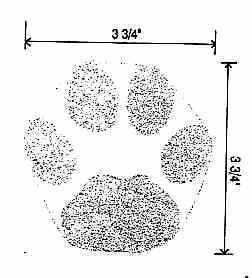The lynx and the bobcat are both mid-sized predators found in Colorado. It's easy to confuse the two species with each other due to their relatively similar appearance, size, and color. However, it is much more rare to see a lynx in the Centennial State.
Lynx were considered eradicated from the state in around 1973, according to Colorado Parks and Wildlife (CPW). Reintroduction began in the 1990s and today, Colorado's San Juan Mountains are home to an estimated 150-250 lynx.
Bobcats have a significantly larger population, with an estimated 12,000 members of this species found around the state. Many reported "lynx" sightings are actually just misidentified bobcats.
Though there are many similarities between the mid-sized feline species, there are also key differences that make each distinguishable.
Lynx fur is longer and appears grayish-brown in the winter, shortening and becoming browner in the summer, according to Colorado Parks and Wildlife.
"They lack distinct spots and striping. A bobcat will typically have distinct spotting on their coats. The front legs of a bobcat will often have distinct striping, as well as their faces," CPW said on their website.
Lynx also have notably larger feet than bobcats.

A Canadian lynx. Photo Credit: Jillian Cooper (iStock).
"The feet of a lynx will look out of proportion to the rest of their body. A bobcat has much smaller feet, which appear proportional to the rest of their body, as if it were a very large house cat," CPW said.

Photo credit: CPW
A lynx's tail is completely black at the tip, while a bobcat's is typically black and white.
"The tail of a bobcat is also usually longer than a lynx, although they both have the short tail, which easily makes them distinguishable from any other wild cat," CPW said.
Lynx that have been released in Colorado are all wearing radio collars that help CPW track them. A collar is a dead-giveaway that what you're looking at is a lynx.

Photo Credit: Colorado Parks and Wildlife.
Lets put your knowledge to the test:
Bobcat or lynx?

Photo Credit: gkuchera (iStock).
Think you got?
It's a bobcat! The distinct markings on the animal's face give it away, as does its tail.
Try again:

Photo credit: johan10. File photo. (iStock).
This photo is a great example of why lynx and bobcats get confused so easily, but there are two clear ways to know that this is definitely a lynx. First, the tip of its tail is solid black. It also has noticeably bigger paws.
If you see a lynx in Colorado, let Colorado Parks and Wildlife know by filling out 'Lynx Sightings' Form. This helps them keep track of the state's lynx population.
STAY INFORMED: Sign-up for the daily OutThere Colorado newsletter here















(1) comment
Great story. I enjoyed reading it. Please be careful though as dangerous animals are lurking along trails, underbrush, etc. See the article in the Denver Gazette by Tamera Twitty on Feb 1, 2022, entitled "How to tell the difference between bobcat and lynx. Larger cats like the mountain lion are very clever and very quiet when hunting their prey.
Welcome to the discussion.
Log In
Keep it Clean. Please avoid obscene, vulgar, lewd, racist or sexually-oriented language.
PLEASE TURN OFF YOUR CAPS LOCK.
Don't Threaten. Threats of harming another person will not be tolerated.
Be Truthful. Don't knowingly lie about anyone or anything.
Be Nice. No racism, sexism or any sort of -ism that is degrading to another person.
Be Proactive. Use the 'Report' link on each comment to let us know of abusive posts.
Share with Us. We'd love to hear eyewitness accounts, the history behind an article.